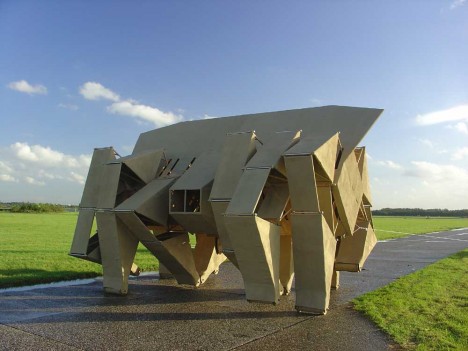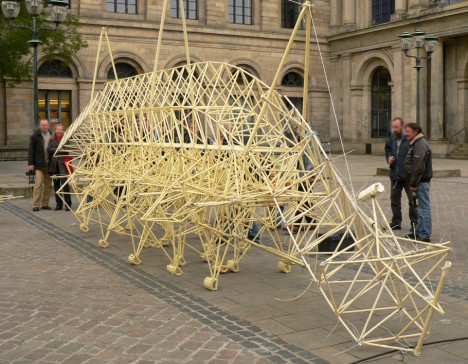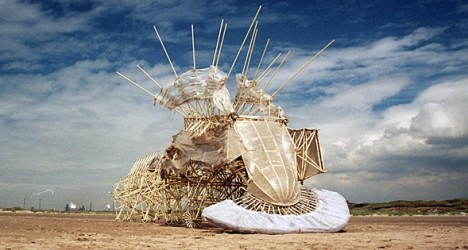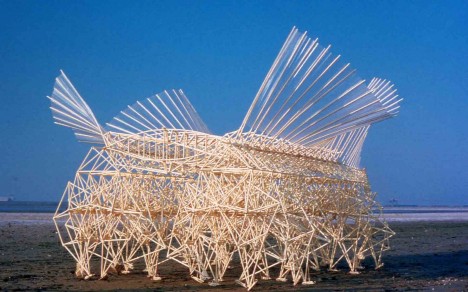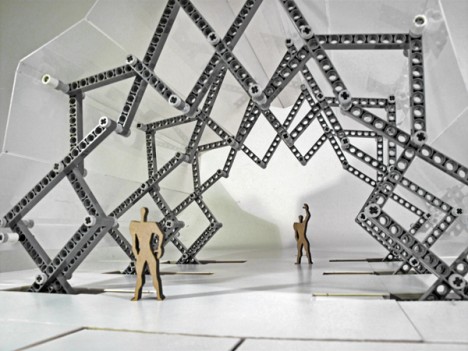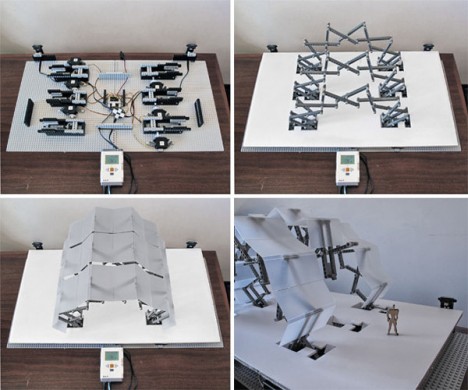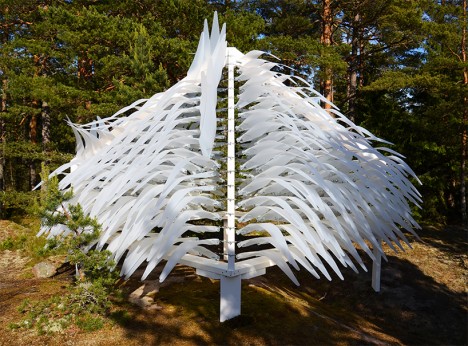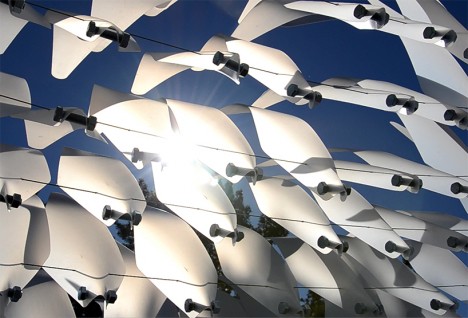Architectural Beasts by Theo Jansen
Part architecture, part sculpture, part mythical creature, each of artist Theo Jansen’s ‘Strandbeests’ walk on the sand at Dutch beaches seemingly all on their own. Jansen engineers them with computers to optimize their movements, taking advantage of wind to power them. A system of compressed air helps them along when the wind is not blowing hard enough. With dozens of legs moving independently, they’re reminiscent of massively oversized insects.
Multipurpose Kinetic Pavilion
This pavilion by Luis Quelhas Marques expands and contracts, disappearing into a platform when not in use. Says the designer, “This research work was developed with the aim of enquiring into the concepts of adaptability, transformation, and interactivity between the built space, its users and the surrounding environment to find appropriate responses to variations in spatial and functional needs, prompted by different uses and activities. After a look into the roots of kinetic architecture and a brief survey of the state of the art, it presents the prototype of a responsive kinetic structure for a multi-purpose pavilion, concluding that by the integration of existing and emergent technologies, we now have the basic means to design and implement such structures.”
Shiver House Moves In Response to Surrounding Natural Forces
Exploring the idea that architecture can be made to seem alive – and that this will make humans feel more connected to it – the Shiver House employs 600 kinetic counter-weighted shingles to move in response to surrounding natural forces like wind and rain. Responding to these weather conditions, the shingles rotate open or closed. NEON based the structure on the traditional Finnish hut.
